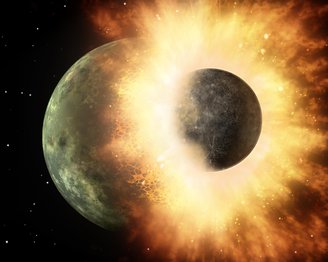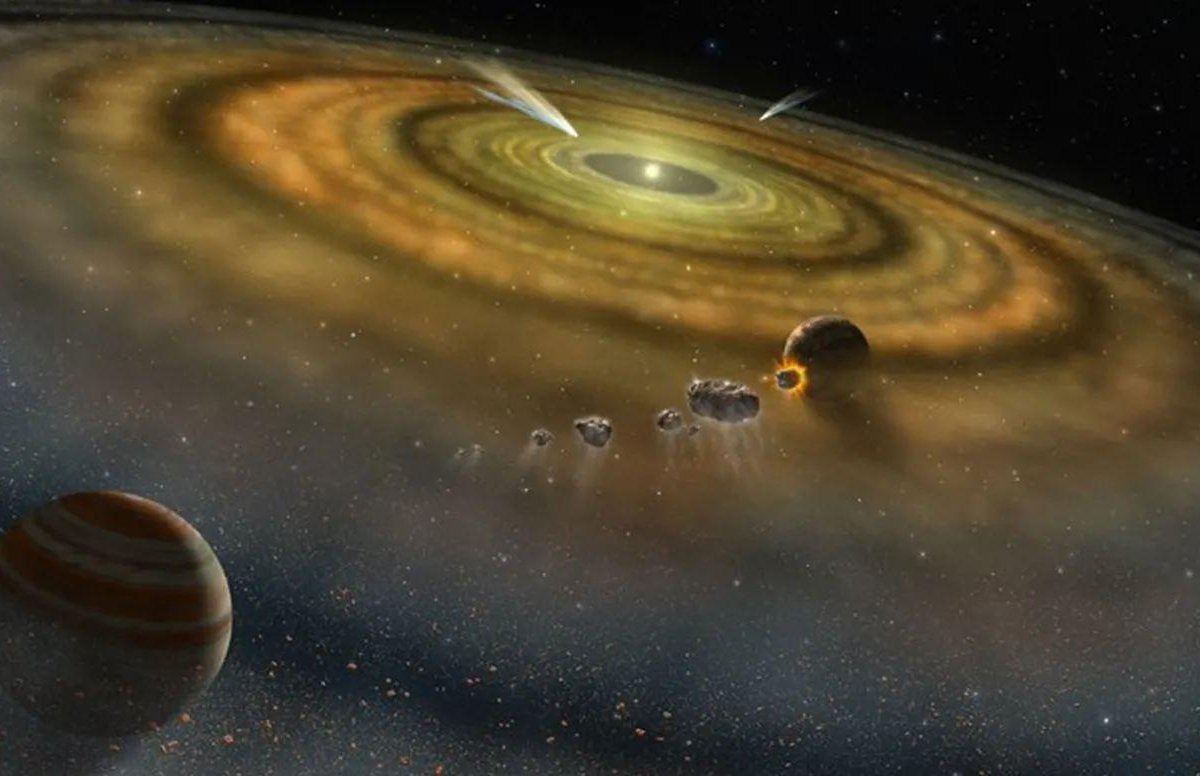The history of the emergence, maintenance and evolution of life on Earth is directly linked to the epic migration of gas giant planets. — Jupiter, Saturn, Uranus, and Neptune—formed closer to the Sun and later migrated to their current, more distant orbital configurationsIn a period of orbital instability.
Recent research published in the journal Science has managed to determine the date of these massive migrations. According to the research, The period when orbits became erratic and unpredictable occurred between 60 and 100 million years after the formation of the Solar System. The findings were based on analysis of the relationship between a rare type of meteorite and a group of main belt asteroids.
The basic premise of the research is: “If a meteorite type can be associated with a particular parent asteroid, this will provide information about that asteroid’s composition, time of formation, temperature evolution, and original size.” Cooling an asteroid allows radiometric dating to determine the age of the meteorite rocks.
Meteorites formed from the original matter of the Solar System
“What we’re trying to do with this study is not just to do a pure dynamic study, but to do a pure dynamical study,” said the paper’s first author, physicist Chrysa Avdellidou from the University of Leicester in England. but combines different types of studies, linking observations, dynamical simulations, and meteorite studies“, he explained in a release.
In the study, researchers used low-iron (EL) enstatite chondrites, also called E-type asteroids, a rare type of space rock originating from the mantle of a primitive asteroid. This parent asteroid preserved the original composition of the material that formed the Solar System.
Dr. Avdellidou’s team discovered that dating planetary migration depends on connecting meteorites to parent asteroids. A link between EL enstatite meteorites and the family of main belt asteroids called Athor. This means that these rocks may also have dispersed during the migration of gas giants.
Dating the instability of giant planets

The authors present fragments of the Athor family as part of a much larger ancient parent body that formed close to the Sun but was subjected to a collision that reduced its proportions. But when the giant planets migrated, Athor was also dragged into the changing mass and also migrated directly into the asteroid belt.
To prove compatibility between two rock types, Spectroscopic and albedo measurements of the Athor family exactly matched the properties of the ELs. Moreover, the orbits of asteroids in the main belt have been shown to be dynamically suitable for transferring fragments to Earth, where they may fall as meteorites.
Therefore, analysis of meteorites showed that Athor’s placement in the asteroid belt could not have occurred before 60 million years ago. While other studies on asteroids orbiting Jupiter show that this period is less than 100 million years, the research shows that since the Solar System formed approximately 4.56 billion years ago, Migration of giant planets occurred between 4.5 and 4.46 billion years ago.
Formation of the Moon and planetoids

The authors state that, coincidentally, there is even a causal relationship between the two events in their research, and that “the formation of the Moon also occurred in the interval that determines the instability of the giant planets.” Occurring approximately 4.5 billion years ago, the reference was the collision of the protoplanet Theia with Earth and the formation of our artificial satellite.
In a press release, Avdellidou compared the study to a puzzle; It’s as if you “realize that something has to happen and try to put the events in the right order to create the picture you see today.”
According to co-author Marco Delbo, an astronomer at the Nice Observatory in France, the importance of identifying the moment is the existence of many planets (planetary embryos) that would disappear if the instability occurred 10 million years after the Sun’s onset. System. After 60 million, “there was more time to bring materials to Earth and Mars,” study showshe finished.
Did you like the content? Stay up to date with more studies about our Solar System on TecMundo and get the opportunity to share the article with your friends!
Source: Tec Mundo
I’m Blaine Morgan, an experienced journalist and writer with over 8 years of experience in the tech industry. My expertise lies in writing about technology news and trends, covering everything from cutting-edge gadgets to emerging software developments. I’ve written for several leading publications including Gadget Onus where I am an author.













